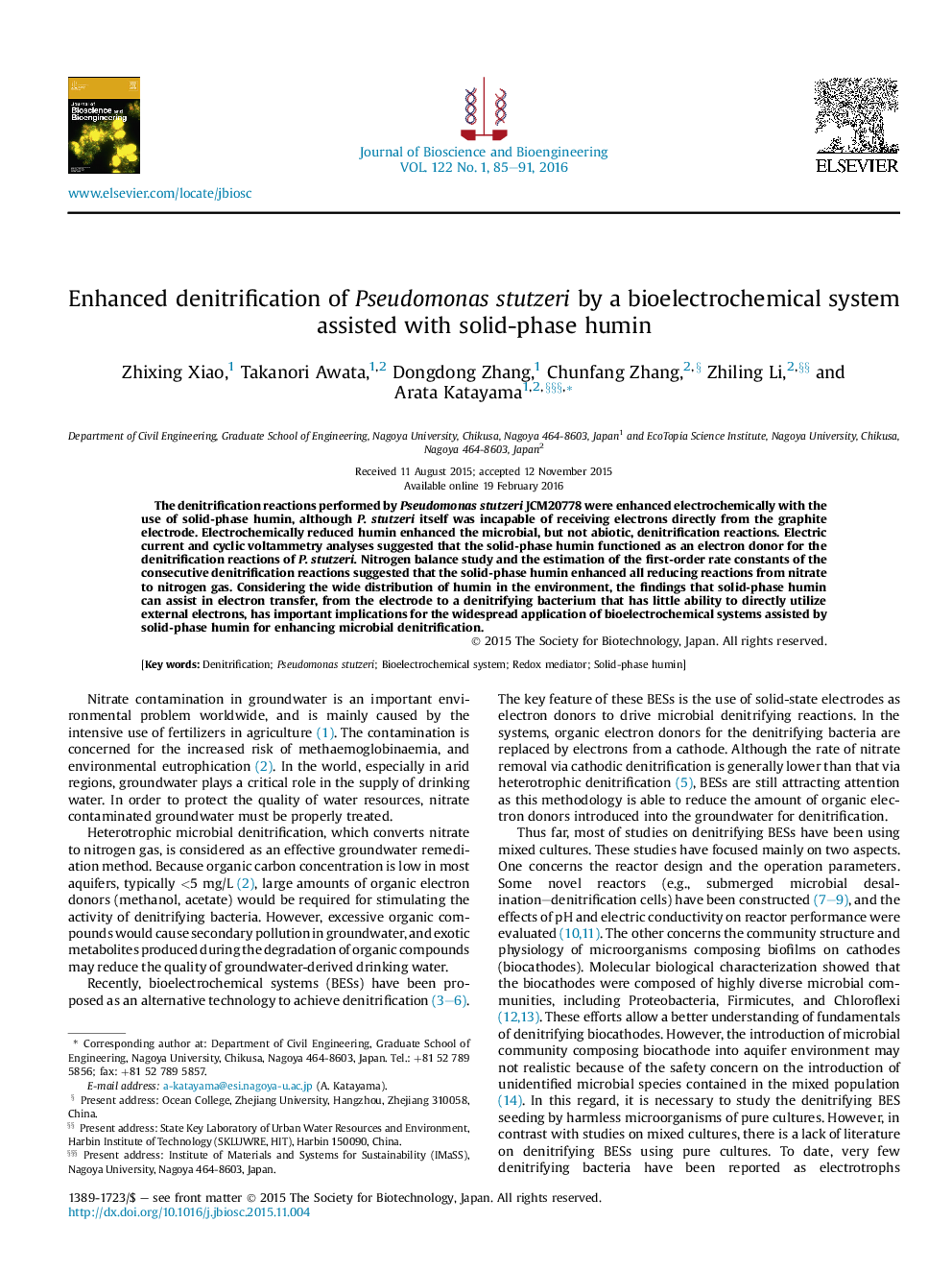| Article ID | Journal | Published Year | Pages | File Type |
|---|---|---|---|---|
| 19984 | Journal of Bioscience and Bioengineering | 2016 | 7 Pages |
•Denitrification of Pseudomonas stutzeri was enhanced electrochemically by solid-phase humin.•Solid-phase humin mediated electron transfer to non-electrotrophic P. stutzeri.•Solid-phase humin enhanced all reducing reactions from nitrate to nitrogen gas.•Non-reduced (intact) humin contained reducing capacity.
The denitrification reactions performed by Pseudomonas stutzeri JCM20778 were enhanced electrochemically with the use of solid-phase humin, although P. stutzeri itself was incapable of receiving electrons directly from the graphite electrode. Electrochemically reduced humin enhanced the microbial, but not abiotic, denitrification reactions. Electric current and cyclic voltammetry analyses suggested that the solid-phase humin functioned as an electron donor for the denitrification reactions of P. stutzeri. Nitrogen balance study and the estimation of the first-order rate constants of the consecutive denitrification reactions suggested that the solid-phase humin enhanced all reducing reactions from nitrate to nitrogen gas. Considering the wide distribution of humin in the environment, the findings that solid-phase humin can assist in electron transfer, from the electrode to a denitrifying bacterium that has little ability to directly utilize external electrons, has important implications for the widespread application of bioelectrochemical systems assisted by solid-phase humin for enhancing microbial denitrification.
